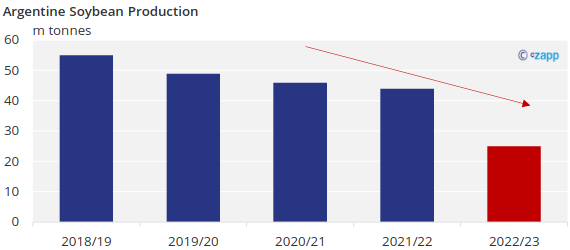Insight Focus
- The American Climate Prediction Center has confirmed an El Niño phenomenon this year.
- Guatemala and Peru should be unaffected by El Niño.
- Argentina and Colombia might benefit from El Niño.
The American Climate Prediction Center has officially confirmed El Niño will occur this year. El Niño is when waters in the eastern Pacific Ocean become warmer than normal, leading to lower atmospheric pressure. This leads to unusual weather patterns in many Pacific regions. The last major El Niño occurred from 2014 to 2016. Then there was a weaker one in 2018/19.
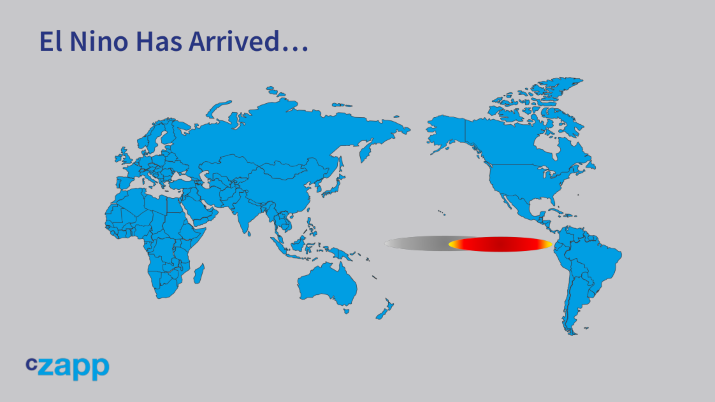
Guatemala
During El Niño, Guatemala usually experiences warmer and drier weather. Guatemala experiences only two seasons: a dry and a rainy season. The rainy season runs from May to October, while the dry season goes from November to April.
During El Niño in Guatemala, a phenomenon called canícula occurs. A canícula is when it stops raining from 10 to 20 days during the rainy season. During the 2014 El Niño, Guatemala experienced a 45-day canícula.
According to a Guatemalan cane farmer, this should not affect the upcoming cane season since “most of Guatemala’s cane fields have irrigation systems in place.” In the past El Niño has not had a significant effect on sugar production in Guatemala.
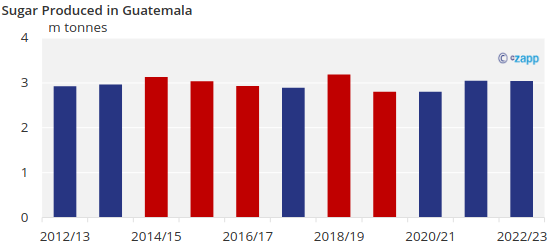
Colombia
El Niño should also bring less rainfall and higher temperatures to Colombia and the rest of the Andean region. The decrease in rainfall could be beneficial for the Colombian sugar industry.
In 2022, Colombia went through a second straight La Niña year. In Colombia’s case, La Niña brings excessive rain. In 2021 and 2022, Colombia’s precipitation was higher than in previous years. The excessive rain that La Niña brings to Colombia has been disastrous to its sugar industry. Colombia’s sugar production and exports have decreased due to La Niña’s rainfall.
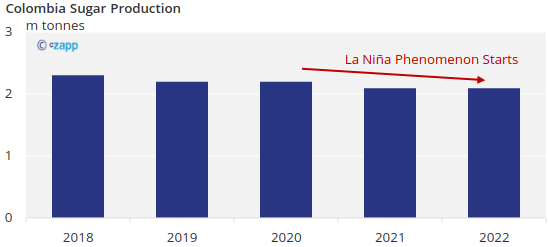
To make matters worse, the Colombian sugar industry has a year-round harvest. The excessive rain that La Niña brings doesn’t allow farmers to harvest the cane. A dry El Niño year could help alleviate the lower sugar production and exports that La Niña has caused the past couple of years.
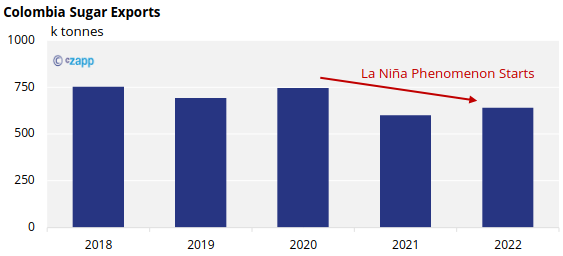
Peru
As mentioned, El Niño should bring less rainfall and higher temperatures to Peru and the rest of the Andean community. Less rainfall in the Andean region should not significantly affect the Peruvian sugar industry.
The Peruvian sugar industry is known to be one of the region’s more modern and sophisticated ones. Most of the cane fields in Peru account for state-of-the-art irrigation systems. The cane fields in Peru have modern irrigation systems since most plantations are in very arid desert-like locations.
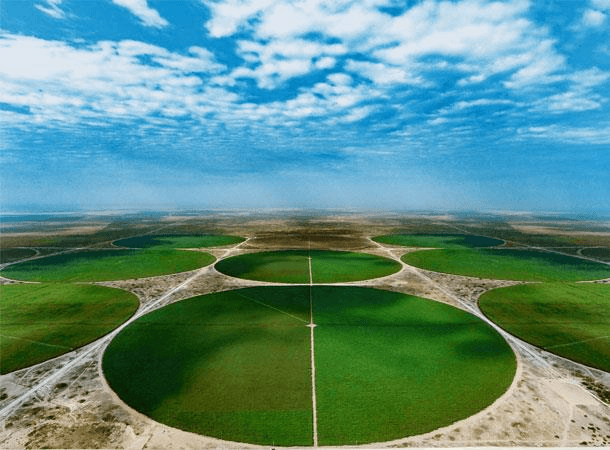
Cane Fields Near Agrolmos Mill
Peru’s sugar production numbers have remained unchanged in the last two El Niños.
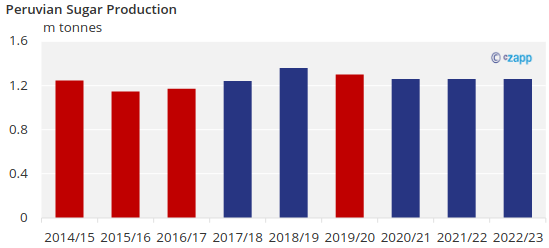
Argentina
Contrasting to Colombia and Peru, two straight years of La Niña brought intense droughts to Argentina. According to weather experts, El Niño usually increases precipitation in Argentina. The increase in rain in Argentina could help relieve recent poor soybean, corn, and sugar crops. Argentine soybean and corn production almost halved from 2021/22 to 2022/23. Sugar also lost significant production.

